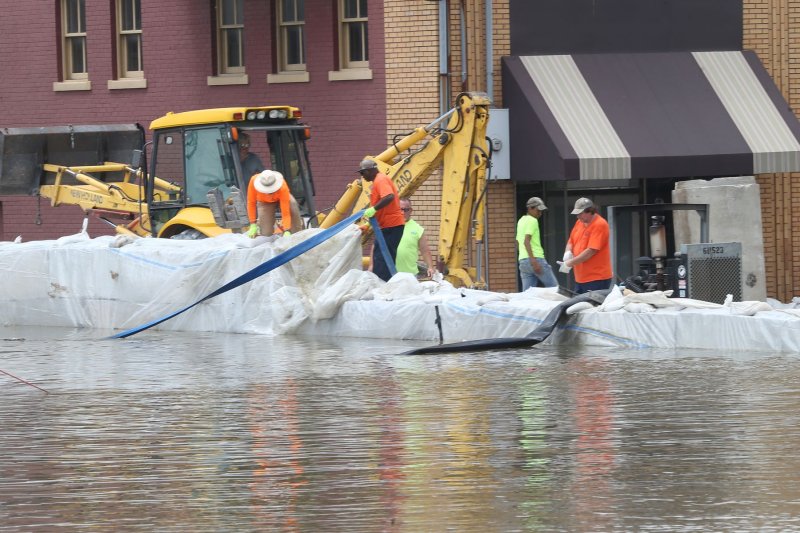1 of 5 | City workers adjust hoses and reinforce plastic on a levee constructed to keep Mississippi River floodwater away from businesses in the downtown area of Alton, Ill., on Friday. Photo by Bill Greenblatt/UPI |
License Photo
While the continental United States recorded its wettest 12-month period in recorded history this year, historic flooding and record-shattering rainfall amounts landed May 2019 as the second-wettest month in the United States.
Precipitation across the contiguous United States that accumulated over the June 2018 to May 2019 12-month period shattered the previous record for any 12-month period with 37.68 inches, 7.73 inches above average.
"The previous June-May record was 35.47 inches and occurred from June 1982 to May 1983. The previous all-time 12-month record was 36.20 inches and occurred from May 2018 to April 2019," Reppert said.
![imgo.jpg]()
While the drought relief has been welcomed in some areas, the wet weather has resulted in disastrous flooding for many communities across the country.
"Most of the wetness has been focused from the Plains through the mid-Atlantic. Rainfall for May 2019 was also quite high in the Southwest as well. In fact, the wettest May on record was had in Kansas, Missouri and Nebraska," Reppert said.
NOAA reported 126 counties in the contiguous U.S. had their wettest May on record.
"Over the 12 months, the lone state that averaged below normal was Washington. Every other state was average to record wettest, with 18 states having a record wettest June-May period," Reppert said.
Dozens of cities from the lower Mississippi Valley to the southern Atlantic Seaboard, mid-Atlantic and Ohio Valley received 125-180 percent of their normal yearly rainfall in 2018.
For example, Washington, D.C., received 66.28 inches of rain last year, when 39.74 inches typically falls in the city in one year.
![90.png]()
Much of Offutt Air Force Base in Bellevue, Nebraska, where the U.S Strategic Command and the 557th Weather Wing and 55th Wing are located, was underwater amid the rising floodwaters. (Twitter / Offutt AFB)
Among all weather-related natural disasters, floods rank as one of the highest culprits for claiming lives.
Floodwaters continue to increase flood fatalities this year; at least 54 deaths have been attributed to flooding in 2019 thus far, according to the National Weather Service.
The floods have also claimed the loss of many crops and continue to affect crop planting. Flood-damaged grain has to be destroyed because of the potential for many contaminants to enter through the water.
Corn planting has been at an all-time low percentage and remains behind schedule in 17 of the 18 states monitored, according to the most recent crop progress report.
Meteorologists ask people to heed all warnings and to stay on high ground when there flood warnings are in effect. If you come across a barricade, a road closed, or high water, experts warn to find a different route.
drenched

















